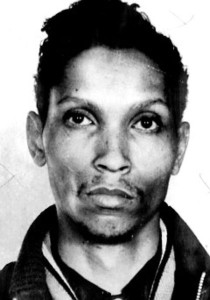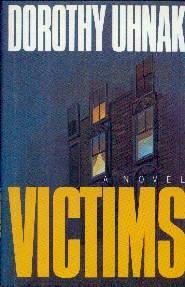
Anyone who has lived in New York City knows the name Kitty Genovese. Even if not living in 1964 during the fatal attack on Ms. Genovese, the legend is strong. If not familiar with this horrible murder, Ms. Genovese departed her train and began walking the 100 yards to her Kew Gardens apartment. Kew Gardens is an upper scale area in Queens, and not known as a trouble spot as so many areas in the city were at that time. A man started following her, she ran, he caught up, stabbed her twice in the back, she reportedly cried out she was stabbed, and neighbors who saw some of the attack did nothing to help. The original newspaper report according to Wikipedia, was exaggerated and it argues that no one saw the attack in its entirely, therefore couldn’t have understood that a woman was being murdered. After she staggered towards a locked door, ten minutes later her assailant returned, hunted her down, and stabbed her numerous more times as he raped her. Someone who witnessed this part of the attack, then called police, who arrived promptly and she died in the ambulance. Much has been made of the “bystander effect”– that of many people witnessing something horrible and all doing nothing, assuming it is either none of their business; they don’t want ‘to get involved’; or someone else is contacting police. I don’t know a thing about this revisionist report regarding the residents of the area having not heard, or not understood an attack was occurring, or their only seeing part of the entire incident. Apparently, two psychologists did a study in 2007 about the incident and concluded the entire news report is more of a parable than a factual account of the attack.
And how was that established, exactly? After all this time, were the witnesses interviewed? And, really, does anyone believe that people who may have ignored a girl’s distress would own up to it? At the time of the attack, windows were closed, which gives one the excuse they need for not hearing exactly what was occurring outside–they heard something, just not sure of what. Some saw something, but they weren’t sure of what. So, hey, what did you expect? It’s not as if they have any responsibility to look at their window after hearing a scream, to make sure everything is OK, or if they witness something fishy, like an attack, and the woman staggers away, that they should intervene, I mean, that’s between the guy and the girl. Right? One person uttered the now famous line, “I didn’t want to get involved” and that has stuck for decades as a cliche for a typical bystander New Yorker.
Having lived in NYC for over 25 years, I can state with pretty good confidence, that you can hear a woman scream, even when the windows are closed. I’ve heard many, rushed to the windows, saw some people standing

around laughing and screaming in laughter, and gone back to bed or whatever I was doing. I can also state, that when I saw something happening outside my apartment, I called the police. Not that they came. A car was making an incredible amount of noise very late at night, I looked out, saw it zig zigzagging down the street, hitting parked cars, figured the person was high or drunk or whatever, and dangerous, so immediately dialed 911. By the time any law arrived, the driver had gotten out of the car, and simply walked or staggered

away. I am not one of the bystanders that don’t act. I’ve witnessed attacks on subway platforms. One such one occurred because a man asked a woman if she had a cigarette, she replied she didn’t smoke, and the man clocked her directly in the face. And then casually sauntered away. She was angry, and followed him. I followed her, as some others did, trying to find a cop to help her because we figured this guy is dangerous. Naturally, no cop was on foot, and the ones I did see were obviously undercover or something and refused to move from their spot. I didn’t see a phone booth–no cell phones back then–but finally was able to wave down a police car and direct them to the perp who was still walking nonchalantly down the street with his victim trailing at a safe distance. I’ve pulled up a jokester from the subway tracks, well aware he might pull me down instead, I couldn’t watch someone be run over by a train, even if the person was unbalanced enough to be on the tracks. I’ve called the police when I saw a man hit a woman so hard, her face immediately swelled up like a reaction to a bee sting–this on the streets of Soho, no less. What I’m saying–I wouldn’t have been one of those who turned away, unless absolutely sure nothing was really happening.
In Victims by Dorothy Uhnak, 1985, there is no ambiguity as to whether witnesses saw and understood what they were seeing. Each neighbor has a different reason for their inaction. Mrs. Kirshner walked her dog right past the slumped figure of Anna Grace, she claimed her precious dog stopped short, she then realized a girl was laying there–but she assumed she was drunk, and when told by Miranda Torres, the officer investigating, that the woman wasn’t drunk, Mrs. Kirshner replied “But we didn’t know that, did we?” Her dog knew, and started shaking all over–her responsibility was to the dog, not some drunk woman. A bus driver saw the inert girl the first time he went by, and when coming back, he stopped and finally made a ruckus, pointing fingers at those who watched and did nothing. His excuse for not stopping the first time–he had to stick to his schedule. Mr. Farmer had been brutally attacked just to see his attacker go free, to attack him once again. He had no interest in getting involved in something like that, after all, what difference would it make? “I treated it as though it was a nightmare.”
The Rollands, seemingly typical married couple, watched as though it were a snuff movie. Elliot Wasserman FILMED the entire attack from start to finish–accidentally at first, deliberately after. And was too busy making the shot to call for help. Mr. Lamont states, “I didn’t. OK,? That’s it. No deep dark terrible reason, no criminal act involved. I just didn’t. I’m not saying that I should have. I’m not saying I shouldn’t have. I’m just saying I didn’t call 911 and neither did anyone else” Angelo tried to report it–and did call 911. Angelo has cerebral palsy, and his voice becomes high pitched like a cartoon character when upset. The 911 operator thought he was a prankster and hung up. Arabella Vidales, an airline hostess, was not at home, her sister who actually occupies the apartment may have been but will not discuss the situation. Her sister is missing, and she’s terrified of something, and looks an awful lot like the victim, Anna Grace. And Anna Grace’s mother, who lives in the building Anna was approaching when attacked, when informed of her daughters death, whispered, “I thought it was the Spanish girl!”
Thus are the voyeurs that watched the horrific event. All for varying reasons, did nothing, a large proportion of them are hinted at as being racist towards Latinos.
Mike Stein, a faded Pulitzer Prize winning reporter, who desperately needs money to buy out his second ex-wife’s half of a shore home, becomes fired up about the witnesses lack of action. He has major pull because of investigating a higher up’s son’s death in Vietnam, and therefore gets permission to trail Miranda Torres as she investigates the crime. She bluntly asks him “Mr Stein, you do not have any interest at all in who killed the woman. Am I correct? This is not of any particular interest to you.”
He answers “absolutely not. It doesn’t make any difference to me, in any way, The girl is dead. Someone killed her. That happens all the time, every how many minutes? My interest is not in the crime or the victim. My interest is in the witnesses.”
The moral implications of the witnesses non action is explored in this book, but it goes farther. When the autopsy reveals Anna Grace actually died from a brain aneurism, not bleeding from stab wounds, Mike Stein sees

his future earnings from the book he will be writing and has been paid for going down the tubes. The politicians who have made a big show of trying to pass an Anna Grace bill in the state congress, do not want this political egg to break, and a certain drug cartel leader from Columbia wants it all to go away for his own reasons. The official autopsy report is altered to adhere to the death by stabbing. The author pulls no punches and no one is exempt from corruption. The media, as presented in Stein’s character, is driven by fame and monetary rewards, not truth. A state senator that owes Torres a favor, responds with lies, and thus cuts her off, with no recourse left for her. Political capital is more important than truth. The federal government has an interest in the drug king pin, and thus doesn’t want his name associated with this crime. Officer Torres is the only honest person left in the case. And she pays dearly for that honesty after declining a pay-off.
As this is a crime novel and there is supposed to be a mystery, the book then goes off into real fiction for a little bit. But returns to the central theme apathy, when the serial killer rapist that had struck several women before Anna Grace was killed, returns, safe in the knowledge that the man who confessed to killing Grace was also blamed for the three women he killed. The serial killer stalks Mrs. Kirshner and her dog, in the exact spot Anna Grace was murdered, sending a message to one and all that he’s still around. At the end of the novel the murderer thinks, “but no one on Barclay Street did anything, as if they had not heard or seen or known a thing. For some reason that struck him funny, and as he drove down Barclay Street he glanced up at all the apartment lights on both sides of the street.” “He felt a little dizzy, a little high, a little hilarious. He felt as if he had just settled something once and for all. But damned if he knew what.”
Kitty Genovese’s murderer was given the death penalty, but a technicality changed it to life–he escaped, held two people hostage at one home, then two more at another, until finally captured. He raped one of his hostages. Luckily, none died this time at his hands. He had admitted to killing other women, and yet he is up for parole, again, this coming November.
The title of the fictional Mike Stein’s series of articles is ‘The Girl Who Was Murdered Twice.’ Considering Kitty’s name is forever synonymous for her innocent horrible death, I would have to say this title is pretty apt. And considering her assailant is still alive and may be free to resume his twisted life, she may yet be murdered a third time.
